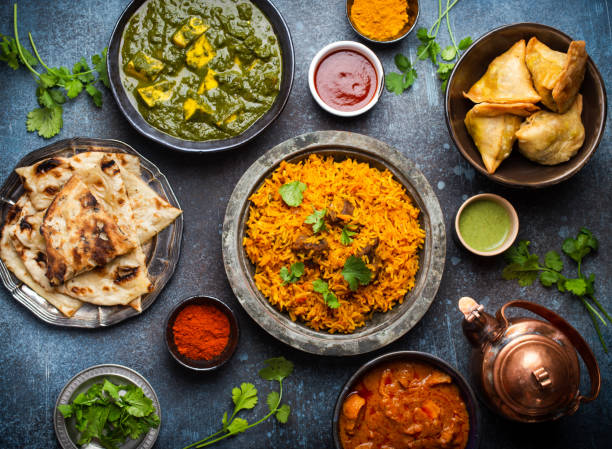Savor the Spice: Exploring Nepalese Cuisine's Hidden Gems
Embark on a culinary journey through the breathtaking landscapes of Nepal, where ancient flavors and modern twists collide. From hearty dumplings to aromatic curries, Nepalese cuisine offers a tantalizing array of dishes that will awaken your taste buds and transport you to the heart of the Himalayas. Join us as we uncover the hidden gems of this underappreciated culinary tradition and discover why Nepalese food is poised to become the next big trend in global gastronomy.

Momos: The Heart of Nepalese Street Food
No exploration of Nepalese cuisine would be complete without delving into the world of momos. These delectable dumplings are the undisputed stars of Nepalese street food and have gained popularity far beyond the country’s borders. Momos are typically filled with minced meat, vegetables, or a combination of both, and are steamed to perfection. What makes Nepalese momos unique is their accompaniment – a spicy tomato-based sauce called achar that adds a zesty kick to each bite. The art of momo-making is a cherished tradition, often passed down through generations. From the delicate folding technique to the precise balance of flavors in the filling, creating the perfect momo requires skill and patience. In recent years, innovative chefs have been experimenting with fusion momo variations, incorporating international flavors and ingredients to create exciting new taste combinations. Whether enjoyed as a quick snack or as part of a larger meal, momos are an essential part of the Nepalese culinary experience.
Dal Bhat: The Backbone of Nepalese Nutrition
Dal Bhat is more than just a dish – it’s a way of life in Nepal. This humble combination of lentil soup (dal) and steamed rice (bhat) forms the foundation of the Nepalese diet, providing a nutritious and satisfying meal that fuels the nation. While the basic components remain constant, the beauty of Dal Bhat lies in its versatility. The dish is often accompanied by an array of side dishes, including vegetable curries, pickles, and papadums, allowing for endless variations and ensuring that no two meals are ever quite the same. The preparation of Dal Bhat is an art form in itself, with each family having its own secret recipe for the perfect dal. The lentils are simmered with aromatic spices like cumin, coriander, and turmeric, creating a fragrant and flavorful soup that pairs perfectly with fluffy steamed rice. In many Nepalese households, Dal Bhat is eaten twice daily, providing a comforting routine and a sense of connection to cultural roots.
Gundruk: Nepal’s Fermented Superfood
Gundruk, a traditional fermented leafy green dish, is a testament to the ingenuity of Nepalese cuisine. This unique preparation was born out of necessity, as a way to preserve vegetables during harsh winters when fresh produce was scarce. Today, gundruk is celebrated not only for its tangy, complex flavor but also for its impressive nutritional profile. The fermentation process enhances the bioavailability of nutrients and introduces beneficial probiotics, making gundruk a true superfood. To make gundruk, leafy greens such as mustard leaves, radish greens, or spinach are wilted, crushed, and left to ferment in airtight containers for several days. The resulting product has a distinctive sour taste and a crunchy texture that adds depth to soups, curries, and pickles. As interest in fermented foods grows worldwide, gundruk is gaining recognition among health-conscious food enthusiasts and chefs looking to incorporate unique flavors into their dishes.
Sel Roti: The Festive Ring of Sweetness
Sel roti, often referred to as Nepal’s answer to the doughnut, is a sweet, ring-shaped bread that holds a special place in Nepalese celebrations and festivals. This crispy on the outside, soft on the inside treat is traditionally made from rice flour, but modern variations may include wheat flour or other grains for added texture and flavor. The dough is carefully spiced with cardamom, cloves, and sometimes sugar, then skillfully shaped into rings and deep-fried to golden perfection. What sets sel roti apart from other fried breads is its unique preparation method. The batter is poured directly into hot oil in a circular motion, requiring a steady hand and years of practice to achieve the perfect shape and consistency. While sel roti is most commonly associated with festivals like Tihar and Dashain, it has become a popular year-round snack, often enjoyed with yogurt or as a accompaniment to tea. As Nepalese cuisine gains international recognition, sel roti is finding its way onto dessert menus in fusion restaurants, offering a taste of Nepal’s rich culinary heritage to global audiences.
Tips for Exploring Nepalese Cuisine
• Start with familiar flavors: If you’re new to Nepalese cuisine, begin with dishes like chicken curry or vegetable momos, which have familiar elements.
• Embrace the spice: Nepalese food can be spicy, but don’t shy away. Start mild and gradually increase the heat level to discover your preference.
• Try the local drinks: Pair your meal with traditional Nepalese beverages like lassi (yogurt drink) or chiya (spiced tea) for an authentic experience.
• Don’t forget the condiments: Nepalese meals often come with an array of pickles and chutneys. Experiment with these to enhance your dishes.
• Look for regional specialties: Nepal’s diverse geography means each region has its own unique dishes. Seek out local specialties when traveling or dining out.
• Be adventurous with ingredients: Try unfamiliar ingredients like timur (Sichuan pepper) or jimbu (Himalayan herb) to discover new flavors.
• Learn the etiquette: In traditional settings, it’s customary to eat with your right hand and leave a little food on your plate to show you’re satisfied.
As we conclude our journey through the vibrant world of Nepalese cuisine, it’s clear that this culinary tradition is ripe for exploration and celebration. With its unique blend of flavors, emphasis on locally sourced ingredients, and rich cultural significance, Nepalese food offers a fresh and exciting alternative to more familiar Asian cuisines. As global food trends continue to evolve, don’t be surprised to see Nepalese restaurants and ingredients gaining prominence in culinary scenes worldwide. So, the next time you’re looking to expand your culinary horizons, consider diving into the diverse and delicious world of Nepalese cuisine – your taste buds will thank you for the adventure.





